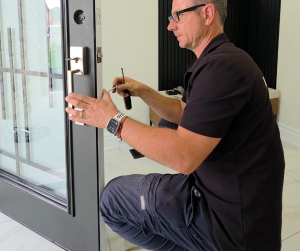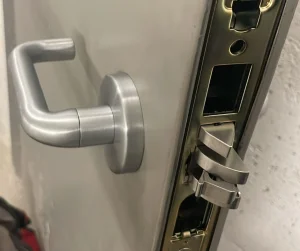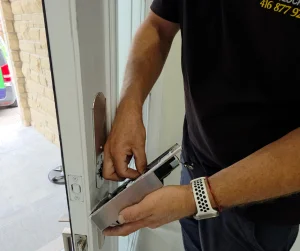Without attention, locks can become stiff, worn, or even break down completely. In this guide, we’ll explore practical tips to help you maintain your locks for longevity. Whether you’re dealing with traditional deadbolts or modern smart locks, understanding how to care for them can save you from future headaches and costly repairs.
Regular Cleaning
Keeping your locks clean is a simple but essential part of maintenance, as dirt and grime can accumulate over time, affecting their performance. Here’s how to clean different types of locks:

Deadbolts and Knob Locks
Deadbolts and knob locks are among the most common types in homes. They can gather dirt and grime that interfere with their smooth operation. To clean these, start by using a damp cloth to gently wipe the lock’s exterior, removing surface dirt. Follow up with a dry cloth to buff the lock’s surface and restore its shine. Avoid using harsh chemicals, as these can damage the lock’s finish and potentially weaken its structure over time.
Smart Locks
For smart locks, dust and debris can interfere with sensitive electronic components, like keypads and touchscreens. Use a microfiber cloth to gently clean the keypad or touchscreen, ensuring you don’t scratch or damage the surface. Additionally, periodically check the battery compartment for corrosion, as buildup can hinder the lock’s performance. Replacing batteries as needed will keep your smart lock operating smoothly.
Lubrication
Lubricating your locks is essential for ensuring they function without friction or stiffness. Different locks require different types of lubricants:
Cylinder Locks
Cylinder locks, such as rim locks and mortice locks, benefit from a graphite-based lubricant. Graphite doesn’t attract dust, unlike oil-based lubricants, which can worsen jamming by collecting dirt inside the lock. Apply a small amount of graphite lubricant directly into the keyhole, and then insert the key and turn it several times to distribute the lubricant evenly. This will help keep the internal mechanisms moving smoothly.
Deadbolts and Slide Bolts
For deadbolts and slide bolts, silicone spray is the best choice. It reduces friction without leaving a sticky residue that can attract dust. Spray a small amount of silicone lubricant into the bolt mechanism, then operate the lock a few times to distribute the lubricant evenly. Regular lubrication, every six months or so, will keep these locks performing well and extend their lifespan.
Inspect for Wear and Tear
Take a few moments to examine all of your locks for signs of wear, such as rust, scratches, or loose components. Rust weakens metal and can compromise the lock’s security. If a lock shows signs of severe wear, it may be worth replacing it before it fails completely, leaving you locked out or vulnerable to security breaches.
Check the Door Alignment
A lock’s performance depends not only on the lock itself but also on the alignment of the door. Misaligned doors can place excess pressure on locks, causing them to wear out prematurely. Check that your door is aligned correctly and that the hinges are secure. If the lock doesn’t engage smoothly, it could mean the door is off-center. Adjusting the door alignment can prevent damage to the lock and make it easier to operate.
Preventative Measures
In addition to cleaning, lubrication, and inspections, taking preventative measures can help extend the life of your locks, especially those exposed to harsh conditions.
Weather-Proofing External Locks
External locks are particularly vulnerable to the elements. Rain, snow, and extreme temperatures can lead to rust, corrosion, or even freezing in winter. Consider installing protective covers for your outdoor locks to shield them from weather damage. These covers help protect the locks’ internal mechanisms from moisture and dirt, which can otherwise cause them to deteriorate faster.
Smart Lock Software Updates
For smart locks, security isn’t just about physical durability; it’s also about staying protected against cyber threats. Smart locks often come with firmware that manufacturers periodically update to improve performance and security features. Ensure your smart lock is connected to your Wi-Fi, if applicable, and regularly check for software updates. This simple step helps keep your lock secure from potential hacking attempts and ensures it functions optimally.
When to Call the Experts
Even with regular care, some lock problems just won’t go away or may be too serious to handle on your own. If your key is hard to turn, the lock isn’t engaging properly, or you notice visible damage that affects your security—it’s a clear sign that professional help is needed. Don’t risk making things worse by trying to fix it yourself without proper tools or experience.
At Matrix Locksmith North York, we’re here to help. Our expert team provides full lock maintenance, repairs, and replacements across the area, and we’re proud to be a reliable locksmith Toronto residents can count on. Whether it’s a quick fix or a full lock change, we respond fast and make sure your property stays safe.













